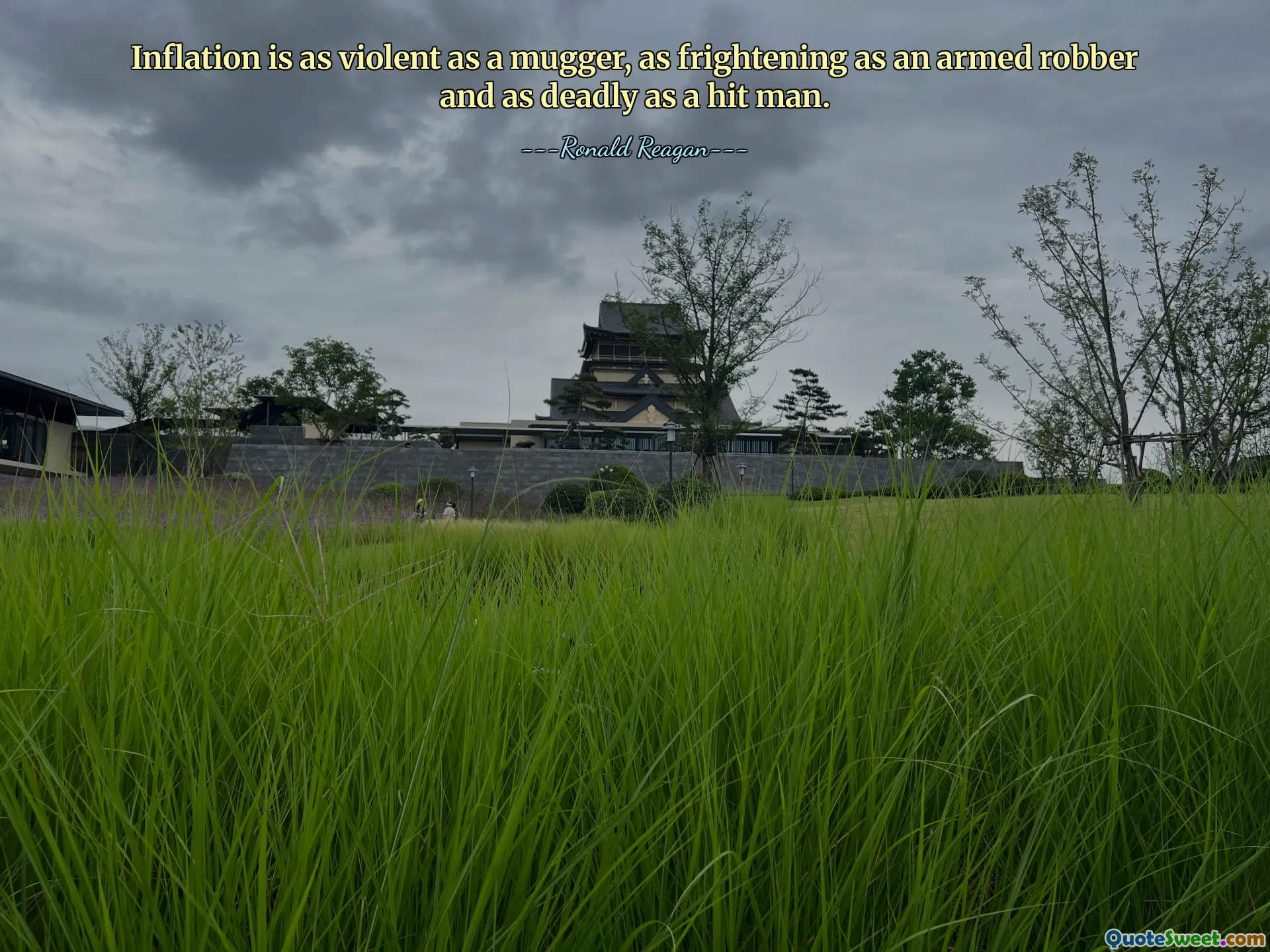
Inflation is as violent as a mugger, as frightening as an armed robber and as deadly as a hit man.
This quote vividly illustrates the insidious and destructive nature of inflation within an economy. Much like a mugger or armed robber, inflation can appear suddenly and threaten the financial security of individuals and businesses alike. When prices rise rapidly and unpredictably, spending power diminishes, making it difficult for households to plan for the future or maintain their standard of living. The comparison to a hit man emphasizes the lethal impact inflation can have on savings and wealth accumulation—eroding wealth with the same ruthless efficiency. Historically, hyperinflation scenarios have decimated economies, leading to social unrest, loss of confidence in monetary systems, and widespread hardship. Even moderate inflation, if uncontrolled, can encourage reckless spending and borrowing, distort investment decisions, and create economic uncertainty. The metaphor reminds us that inflation’s damage isn't always immediately visible but can be just as deadly over time. Policymakers must hence work diligently to maintain inflation at manageable levels, understanding that neglect can result in long-term consequences akin to violence. Managing inflation requires balancing monetary policy, fiscal prudence, and transparent governance, yet the danger remains that inflation can spiral out of control, similar to violent criminals who threaten the stability and safety of community life. Recognizing inflation’s potential for harm encourages prudent economic policies that prioritize stability, safeguard savings, and ensure sustainable growth for all members of society.











